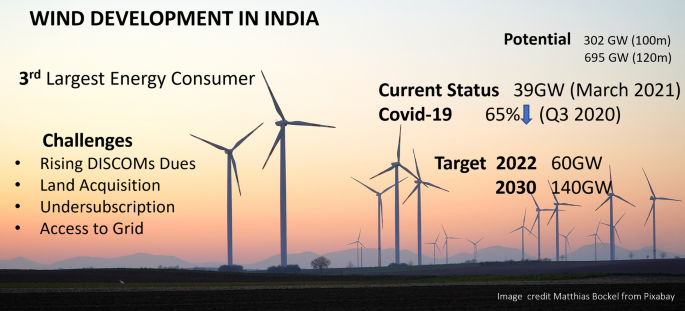Tamil Nadu’s Wind Repowering Policy Faces Industry Opposition
Why in the news?
Tamil Nadu’s new 2024 policy on repowering ageing wind turbines has faced opposition from wind energy generators, who argue it lacks financial incentives and field support for effective implementation.
About Wind Energy Capacity and Potential in India:
- India has a substantial wind energy potential of 1,163.86 GW at 150 metres above ground, according to the National Institute of Wind Energy (NIWE). At the current turbine height of 120 metres, the potential is around 51 GW, with Tamil Nadu alone contributing 68.75 GW.
- Nationally, only about 5% of this wind potential is tapped, while Tamil Nadu utilises nearly 15%. Leading states in wind power generation include Gujarat, Tamil Nadu, Karnataka, Maharashtra, Rajasthan, and Andhra Pradesh, collectively contributing 93.37% of India’s installed capacity.
Tamil Nadu’s Wind Power Capacity and Current Policy:
- Tamil Nadu, a pioneer in wind installations since the 1980s, has the second-highest installed capacity in India, with 10,603.5 MW. Over half of its 20,000 turbines are small, with capacities under 1 MW. In August 2024, Tamil Nadu introduced a new “Repowering, Refurbishment, and Life Extension Policy” aiming to modernise old turbines.
- However, the policy has faced opposition, with industry representatives approaching the Madras High Court and securing a stay. Generators argue the policy does not sufficiently support wind energy expansion, citing issues with land availability and lack of banking facilities for repowered turbines, impacting financial viability.
Repowering and Refurbishing Challenges:
- Repowering involves replacing old turbines (usually below 2 MW or older than 15 years) with higher-capacity ones. Refurbishing can entail increasing turbine height, upgrading blades, or installing advanced gearboxes.
- Despite potential gains, repowering can require more land. For instance, a modern 2.5 MW turbine, 140 metres tall, needs five acres to produce 80 lakh units annually. Land limitations and infrastructure challenges, such as delayed sub-station projects, also hinder development in high-potential sites like Aralvaimozhi.
Sources Referred:
PIB, The Hindu, Indian Express, Hindustan Times





